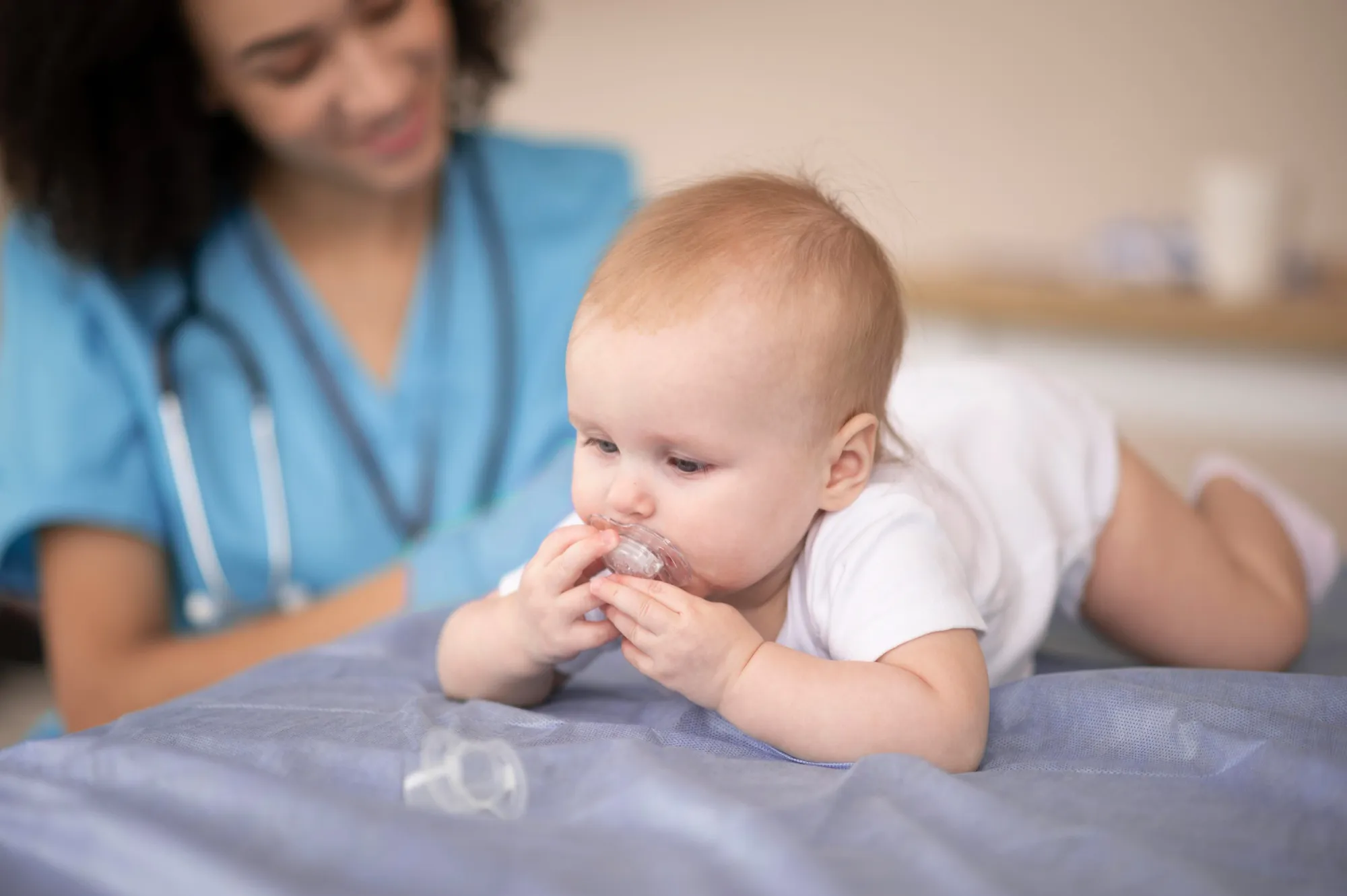Keywords
1. Gastric Pneumatosis in Preterm Baby
2. Neonatal Intensive Care
3. Premature Birth Complications
4. Pneumatosis Cystoides Intestinalis
5. Successful Treatment Outcomes in Neonates
A delicate balance of hope and concern is a familiar emotional landscape for neonatal intensive care units (NICUs) around the world, where the smallest patients face some of the most daunting challenges. A case that emerged from Mediclinic City Hospital in Dubai spotlights this tension, capturing the attention of the medical community due to the rarity of the condition and the positive outcome that followed. This article delves into the fascinating case of a premature baby who developed gastric pneumatosis, a condition seldom seen in such young patients, and emerged with a desirable outcome. This case is documented in the BMJ Case Reports with the DOI 10.1136/bcr-2019-230188 and serves as a beacon of hope and a testament to the advancements in neonatal care.
Gastric Pneumatosis: Understanding the Condition
Before delving into the specifics of the case, it is essential to understand what gastric pneumatosis entails. It is a rare condition characterized by the presence of gas-filled cysts in the wall of the stomach or intestines. Though usually seen in adults, its occurrence in neonates, especially those born preterm, is exceedingly uncommon and can signify an underlying and serious pathology such as necrotizing enterocolitis (NEC), a concern discussed in the work of Chew et al. (2018) (DOI: 10.1136/bcr-2018-224356).
The Case
The case, as detailed by Abusalah et al. (2019), involves a female infant born prematurely with a surprising diagnosis of gastric pneumatosis. Notably, the absence of associated common complications, such as NEC, made this case particularly unique. The attending physicians, Dr. Zahreddin Abusalah and Dr. Jennifer George, published their findings, emphasizing both the rarity of the condition in such a young infant and the intricacies involved in her successful treatment.
Clinical Presentation and Diagnosis
Upon clinical examination, the infant displayed signs that prompted further investigation, which eventually led to the diagnosis of gastric pneumatosis. Specialists used radiological evidence, as noted in the case report, to confirm the presence of pneumatosis cystoides intestinalis – the medical term for the distinctive pattern of gas cysts observed within the stomach wall.
Managing the condition required expertise and delicate intervention. The treatment plan, adapted from the experience of handling similar gastrointestinal anomalies in newborns, included careful monitoring and supportive care, as referenced by Penninga et al. (2015) (DOI: 10.1136/bcr-2014-208390).
Desirable Outcome
The most striking aspect of this case was the favorable result achieved. Despite the seriousness of her condition, the preterm baby responded positively to the treatment, defying the potential dire predictions associated with gastric pneumatosis. The team’s evidence-based approach and diligent care played a significant role in steering the infant toward recovery, a journey that invokes hope for future cases with similar challenges.
This success story is not merely about one baby’s resilience but also sheds light on how far neonatal medicine has come. The outcome elucidates the potential of contemporary NICU care and the importance of continued research and knowledge sharing in the field.
Implications for Future Cases
The rarity of gastric pneumatosis in preterm infants means that every documented case adds valuable insights into its management and potential outcomes. As a new association in neonatal pathology, it opens avenues for further research and inquiry into how best to approach such conditions, especially in the delicate context of preterm infants. The case report by Abusalah et al. contributes to a growing repository of knowledge that can inform doctors worldwide and improve neonatal outcomes.
References in neonatal care literature, such as the study by Markel et al. (2013) (DOI: 10.1016/j.jpedsurg.2012.12.018), stress the significance of understanding the nuances in the presentation of such conditions to avoid unnecessary and invasive interventions. In addition, the case underscores the relevance of radiological expertise in neonatal and pediatric surgery, as imaging plays a crucial role in diagnosis and subsequent management decisions, a theme reverberated in the observations of Brady and Dillon (2015) (DOI: 10.1056/NEJMicm1411051).
The path forward for medical professionals dealing with similar neonatal conditions lies in the careful synthesis of clinical signs, radiological data, and a multidisciplinary approach to care. Mahgoub et al. (2014) (DOI: 10.1136/bcr-2013-202814) also advocate for a nuanced understanding of gastric and intestinal pathologies in neonates, as misdiagnosis can lead to treatments that bear significant risks for these fragile patients.
Professional and Parental Perspectives
Dr. Zahreddin Abusalah and Dr. Jennifer George reported no competing interests in their BMJ case report, ensuring the integrity of their findings. The collaborative effort between the NICU team and the family was pivotal. The parents’ trust in the medical team’s expertise and their understanding of the condition contributed to the favorable outcome.
Conclusion
The case of the preterm baby with gastric pneumatosis at Mediclinic City Hospital stands as a beacon that lights the way for handling complex neonatal conditions with confidence and caution. It is a testament to the power of modern neonatal intensive care and the incredible potential for positive outcomes, even in the face of initially alarming diagnoses.
The journey of this little patient from a precarious start to a triumphant recovery encapsulates the promise of medical progress and the dedication of healthcare professionals. It is a narrative imbued with scientific discovery, clinical acumen, and most importantly, the unyielding human spirit’s capacity to overcome overwhelming odds.
The successful management and outcome of this case reflect the dynamic state of neonatal care, the importance of specialized training, and the power of hope. For medical professionals, researchers, and families alike, this story serves as both a scientific resource and an inspiration, symbolizing the strides being made in the world of neonatal health and the limitless possibilities that the future holds.
